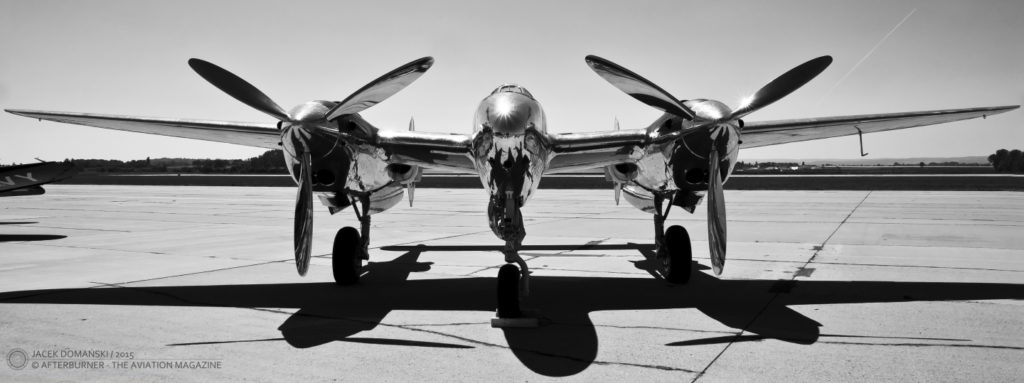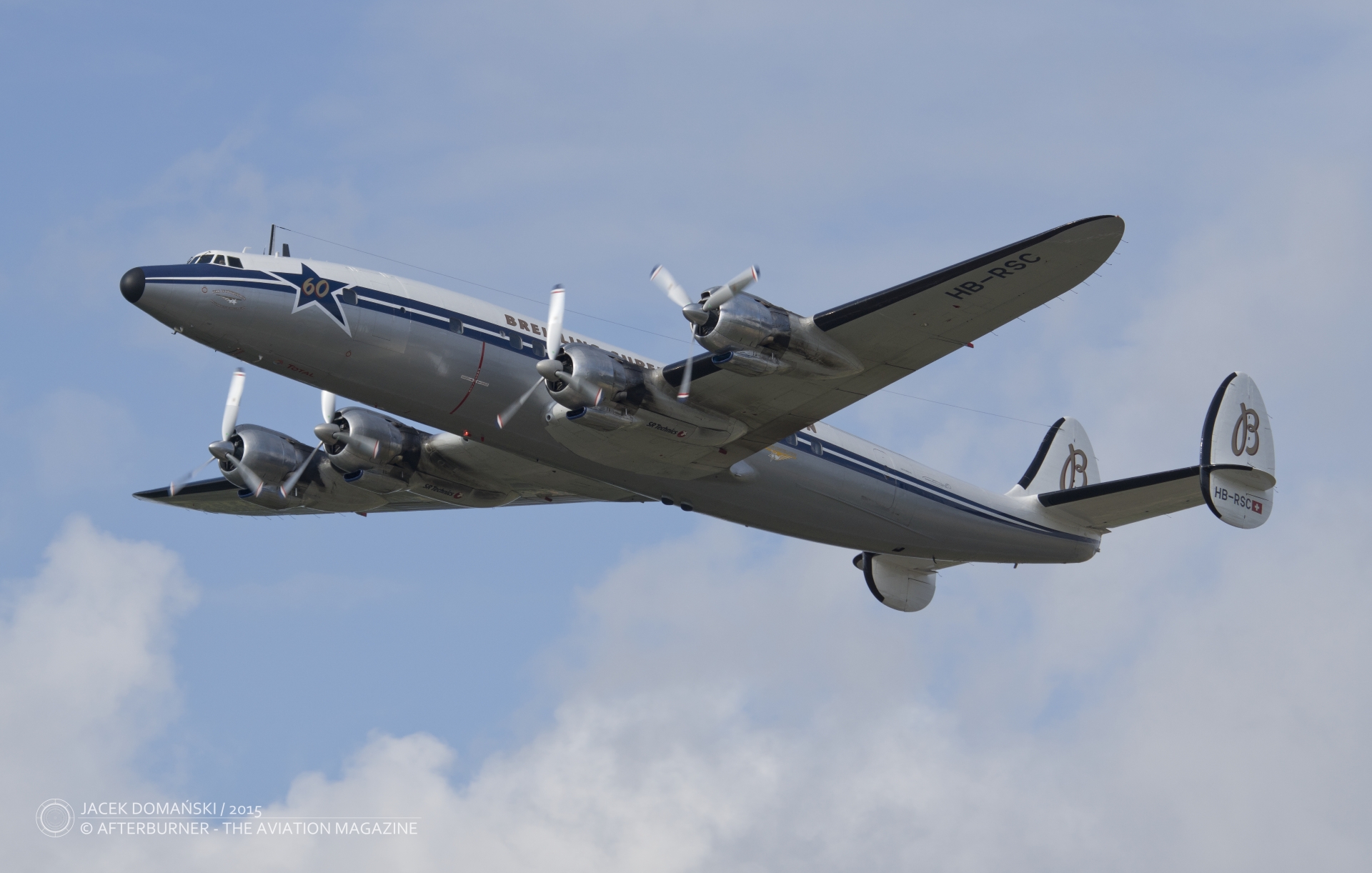 On 27th January 1939, prototype of twin piston-engine fighter aircraft XP-38 performed its maiden flight, by test pilot Benjamin S. Kelsey.
On 27th January 1939, prototype of twin piston-engine fighter aircraft XP-38 performed its maiden flight, by test pilot Benjamin S. Kelsey.
The P-38 fighter was created in response to the United States Army Air Corps (USAAC) specification for a new fighter, issued in February of 1937. General idea of the aircraft was outlined by lieutenants Benjamin Kelsey and Gordon Saville, and officially designated Circular Proposal X-608. The new aeroplane was described there as high-altitude, twin-engine interceptor and its basic characteristics went much beyond the standards of the USAAC aircraft at that time.
In fact, it was the most demanding specification for a fighter aircraft, the USAAC ever issued. It required, inter alia, a maximum speed of at least 580 km/h at operational altitude and a climb rate of at least 20,000 feet in 6 minutes. And that caused the proposal was responded by only two aviation manufacturers – Lockheed and Vultee. However, XP1015 project submitted by the latter was shortly classified as having little perspectives.
On 23rd June 1937, project designated Model 22 and submitted by the Lockheed Corporation was announced the winner, and the company was assigned the task to build the new fighter, now officially designated XP-38.
Works on the projects were assigned to a special, secret engineering team led by Hall Hibbard and Clarence Johnson. Development works were performed at a remote location – old bourbon distillery purchased by Lockheed and later known as Skunk Works.
For its new aircraft, the Lockheed engineers have chosen a specific, uncommon configuration. Engines and their superchargers were placed in two booms that together created the tail section of the aircraft, connected with a joint horizontal stabilizer. Separated, central gondola housed the pilot´s cockpit and armament – consisting of four Browning machine guns and one Hispano 20mm cannon.
Works on the first prototype of the XP-38 were launched in July of 1938. At beginning of the next year, the aeroplane was ready for its maiden flight that occurred, as mentioned above, on 27th January 1939.
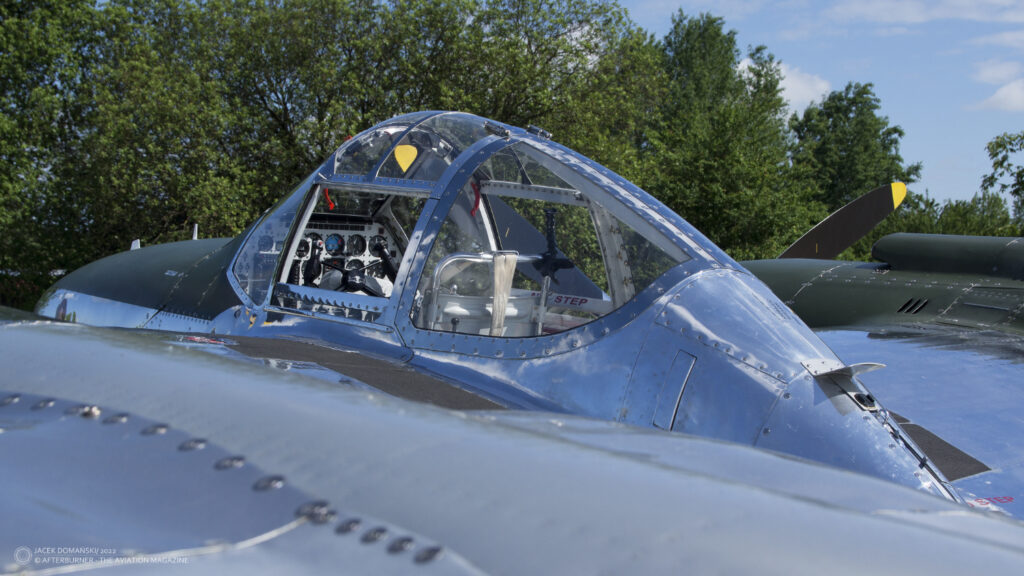
Although unorthodox, the characteristic configuration of the XP-38 made it the first military aircraft in the world to exceed 640 km/h (400 mph) in level flight. The exceptional speed performance of the new fighter was shortly proven during flight from California to New York. Excluding two refuelling stops, the XP-38 covered that route in seven hours and two minutes, setting the new record. For the USAAC it was enough to order the first batch of thirteen examples of the new fighter.
Nevertheless, production of the first series of the XP-38 met several issues caused by advanced design of the aircraft as it was made of stainless steel, aluminium skin panels and its construction implemented the new, flush-riveted technology. In addition, high-speed compressibility problem was discovered. Extensive testing of prototypes of the aircraft and then implementing changes to its initial design, as well as arranging the serial production of the new fighter lasted several months, causing significant delay in its deliveries.
The first aircraft from initial batch was ready in September of 1940. The last, thirteenth example from the first series was delivered only in June of 1941. Shortly after, the USAAC was renamed the United States Army Air Forces (USAAF) and its authorities placed another order, this time for sixty-five new fighters – now officially designated Lockheed P-38 Lightning.
Although initially the P-38 was designed and developed as the high-altitude interceptor, the first version of the aircraft that entered combat service was P-38E – an unarmed reconnaissance variant with its armament replaced by four photo cameras. Since April of 1942, the P-38Es operated from Australia, within the 8th Photographic Squadron of the USAAF, as well as the Royal Australian Air Force.
In May of 1942, the P-38s were delivered to squadrons operating from Aleutian Islands. There, on 9th August 1942, the Lightning opened its record of air victories when two P-38 aircraft assigned to the 343rd Fighter Group shot down a Kawanishi H6K flying boat.
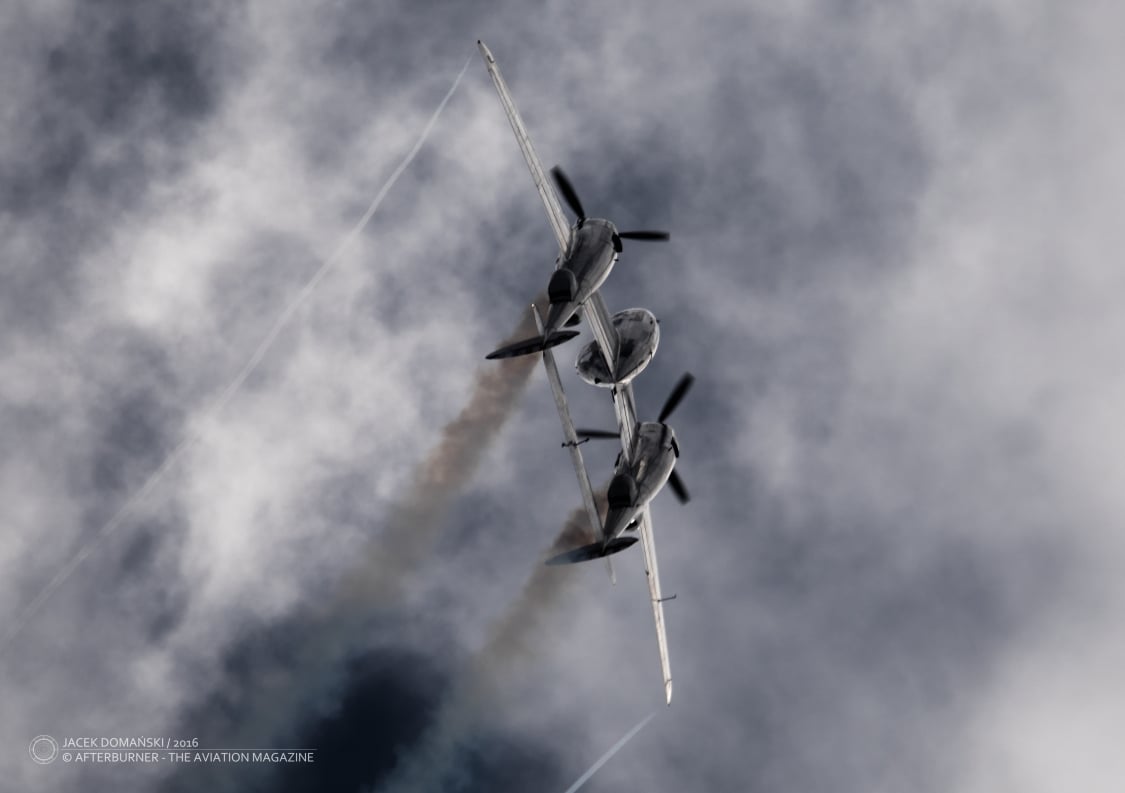
Shortly after, the USAAF began with deployment of its aircraft to Europe. The Lightnings were usually flown to the old continent via the northern way, across the Atlantic with stopover in Iceland. On 14th August 1942, one of those P-38s flying over the Atlantic shot down a Focke-Wulf Fw 200 ´Condor´, off the Iceland shore. It was the first Luftwaffe aeroplane downed by the USAAF in the World War II.
At the end of 1942, the Lightnings took part in Allied operations in North Africa. The outcome was, although, below expectations. The P-38 was designed as the interceptor aircraft, nevertheless, most of its combat tasks flown in the Mediterranean Theatre of Operations (MTO) were nothing more than close escort of bomber aircraft. In that way, the Lightnings lost their biggest advantages and became quite easy prey for German fighters. On the other hand, when advanced characteristics of the P-38 were used in a proper way, their pilots quickly managed to score several kills and even becoming air aces. It was a hard lesson, but conclusions were drawn and, since February of 1943, operational use of the Lightnings in the MTO was revised accordingly.
Since autumn of 1943, the Lightnings joined the Allied bomber offensive on Germany, as long-range escort fighters operating from the Great Britain airfields. The units deployed to England included the 20th, 55th, 364th and 479th Fighter Groups. In 1944, they were joined by the 370th and 474th Fighter Groups that operated the P-38s in fighter-bomber variants. Flying initially from England and then, after the invasion of Normandy, from continental airfields, the Lightings performed several successful missions against German armoured units, radar installations, military headquarters and supply storages.
Regrettably, the fighter units of the P-38 did not perform as well as the ground attack ones. After a few quite successful months, the Lightnings became outperformed by the latest versions of either Bf 109 and FW 190. The German fighters were now significantly faster than the P-38s, causing their loses were continually increasing. Some of the highest USAAF authorities in Europe began to ask for withdrawing the Lightnings from combat duties and transfer them to perform only reconnaissance tasks. Initial attempt to solve the outperformance by introducing P-38J – new, upgraded variant of the aircraft, did not bring satisfactory results and, as a consequence, until September of 1944 all but one Lighting-equipped FG received P-51 Mustang fighters as the replacement for the P-38.
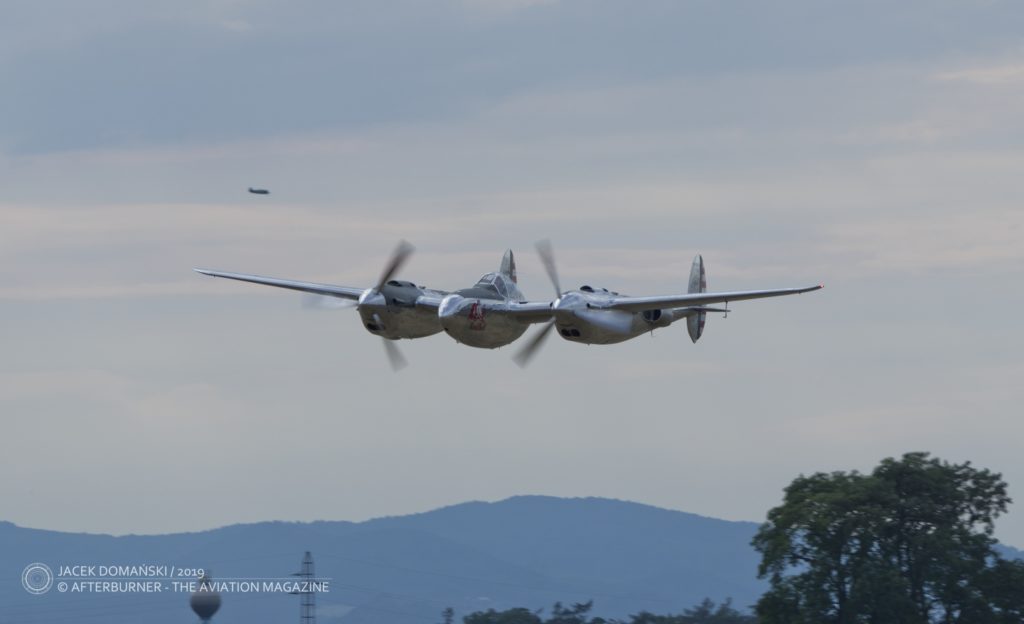
Comparing to the mixed outcome in Europe, the Lightnings proved to be successful fighters in the Pacific Theatre of Operations (PTO). Their exceptional range and high cruising speed were the great advance in flights over the Pacific, where two engines provided an additional insurance.
Within the PTO operations, the P-38 pilots shot down more than 1,800 Japanese aircraft. More than one hundred of Lightning pilots achieved status of the air ace. One of the most known operations performed by the P-38s in the Pacific was killing of Admiral Isoku Yamamoto, the godfather of attack on Pearl Harbor. The interception of Yamamoto´s aircraft, codenamed ´Operation Vengeance´, was performed successfully on 18th April 1943 by a group of sixteen Lightnings.
During the World War II, the P-38 Lightning was – apart from the USAAF – operated by a few other Allied air forces, such as the Royal Australian Air Force, the Chinese Nationalist Air Force, the Free French Air Force and Italian Co-Belligerent Air Force. After the war, list of the Lightning operators was extended with Colombia, Honduras and Italy.
The P-38 was manufactured until the end of 1945 and more than 10,000 examples of that aircraft, in fourteen main variants, were built. The list of developed versions, including prototypes and conversions, exceeds thirty different types and includes fighters, night-fighters, fighter-bombers and reconnaissance aircraft, as well as a floatplane and deck-carrier fighter.
Currently, there are approximately only thirty-five surviving P-38 Lightning aircraft and most of them are based in the United States. Only about ten of them are in airworthy condition.
